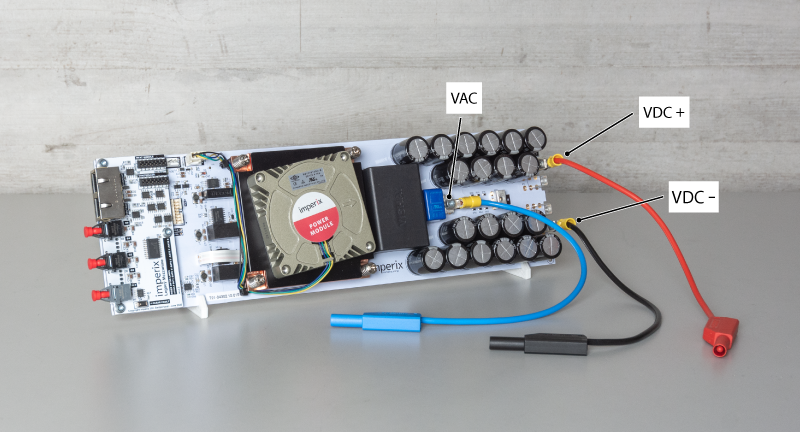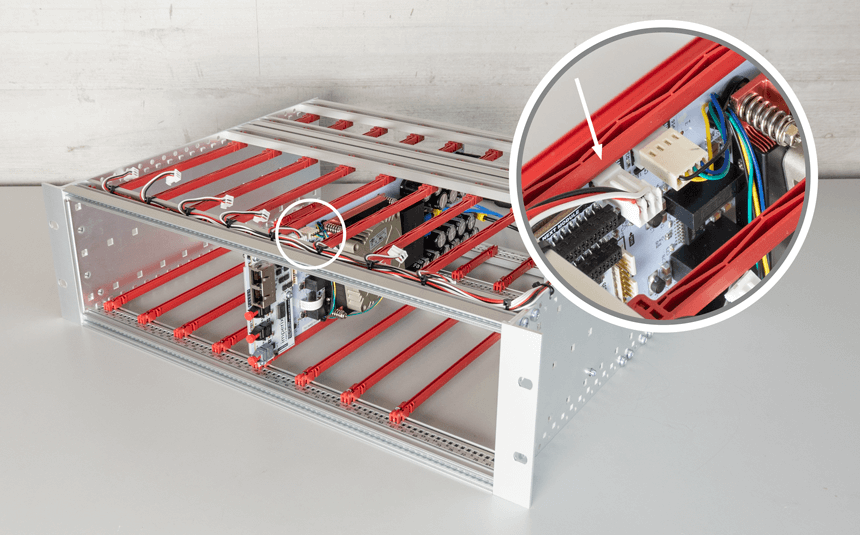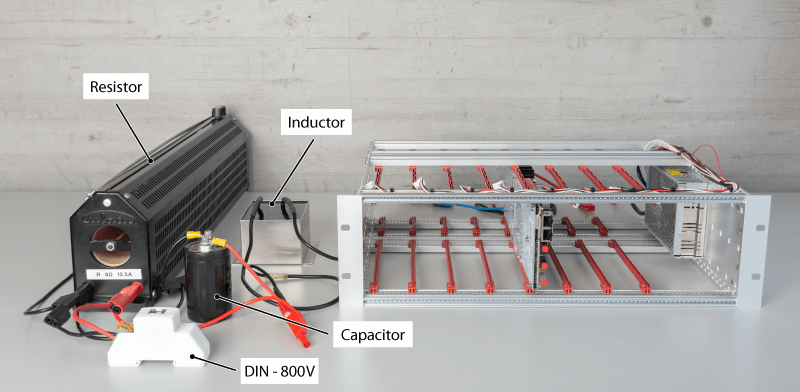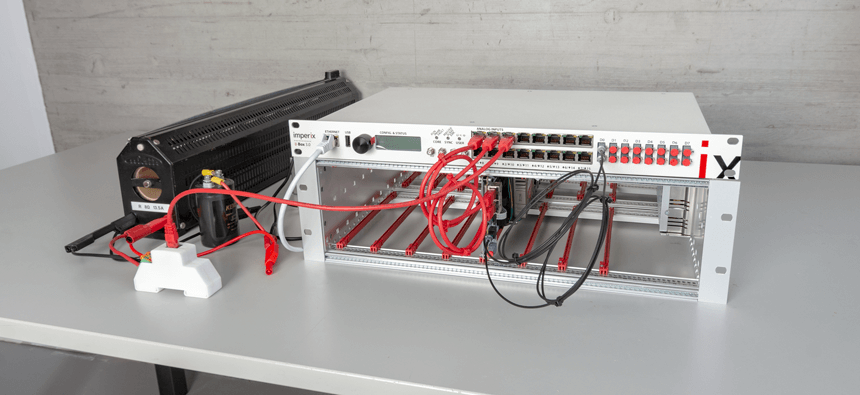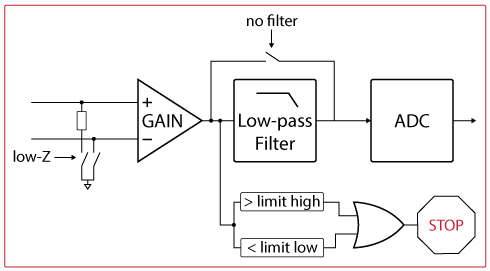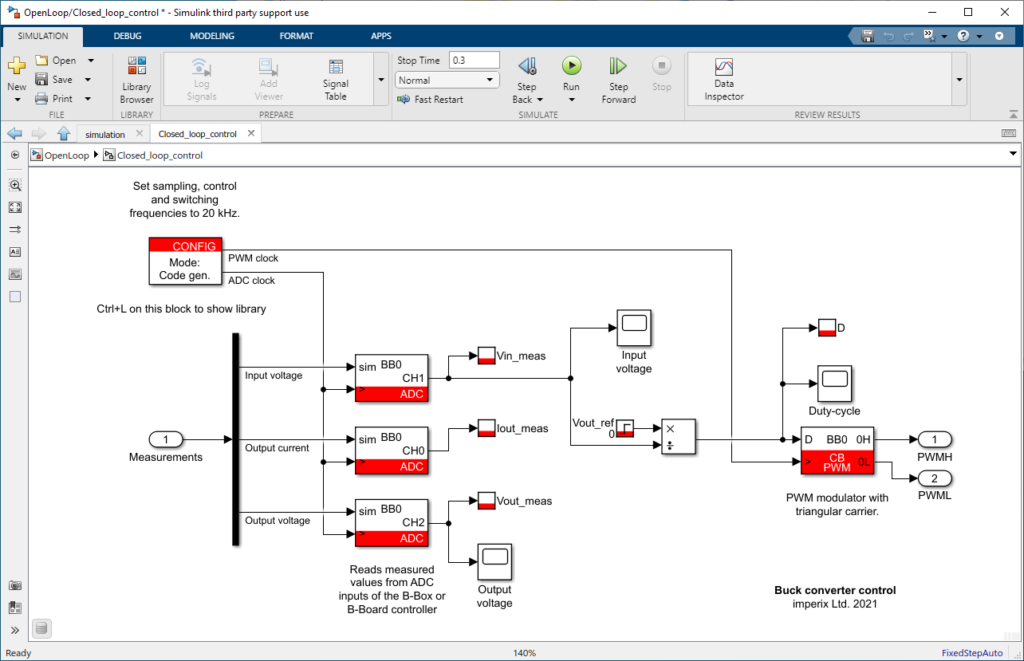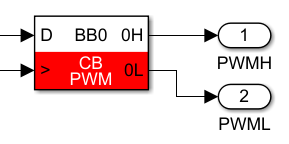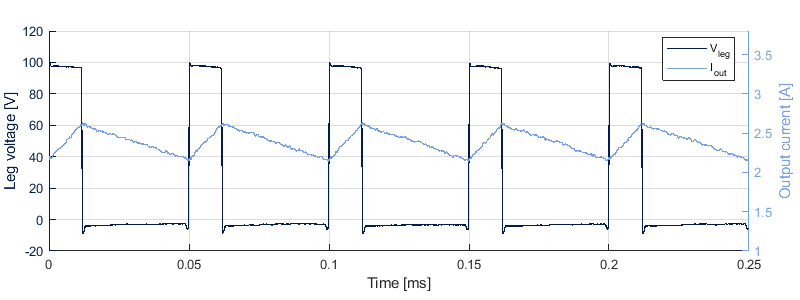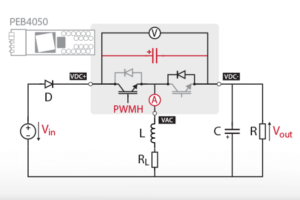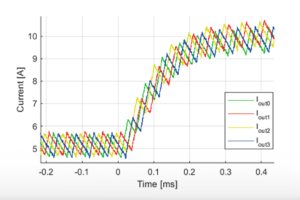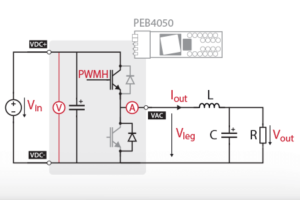Table of Contents
This quick-start guide describes how to build a buck converter controlled in open-loop using power modules and the B-Box RCP programmable controller using the Simulink blockset. Specifically made for users who would want to get familiar with imperix’s solutions, this guide details step-by-step instructions on how to assemble and program a simple power converter. For further details on the theoretical aspects of buck converters, please refer to the page: Step-down buck converter.
Hardware requirements
The following list describes the required hardware. It comprises imperix products as well as additional components commonly available in power electronic research laboratories :
- Imperix products
- 1x programmable controller (B-Box RCP)
- 1x phase-leg module (PEB8038 or PEB8024 or PEB4050)
- 1x voltage sensor (DIN-800V)
- Control development tools for Simulink and PLECS (ACG SDK), with a valid license
- Additional hardware
- 1x Inductor
- 1x Capacitor
- 1x Resistor
- A power supply
- Safety laboratory cables (banana)
Description of the implemented system
The schematic below serves as a reference for the required electrical connections. It is a buck converter made from a semiconductor switching cell, an inductor, a capacitor, and a load resistor. The converter is controlled in open-loop by a programmable controller (B-Box RCP).
As opposed to a buck made with a diode and a transistor, this one is made with a commutation cell (two transistors). In other words, the bottom transistor’s body diode acts as a flyback diode, to reduce the voltage spike across the inductor.
Note that, in the case of MOSFETs, their body diodes are known to perform poorly and will generate significant losses when the upper switch is open. To avoid this issue, a PWM signal also drives the low-side transistor so that the current goes through the channel and not the body diode.
The operating conditions for the converter were, in this specific case, defined by the load resistor current rating of 13.5 [A]. Having a resistance of 8.5 [Ω], a supply voltage of 100 [V], and therefore a maximum load current of 11.75 [A] seemed appropriate. An off-the-shelf inductor and capacitor of 2.36 [mH] and 2 [mF] respectively, guaranteed Continuous Conduction Mode (CMM) operation and acceptable output voltage ripples.
Mechanical assembly of the power equipment
The first step to build the converter is to connect a cable to the VAC terminal (switching midpoint) of the PEB module. It is best to do it before inserting the module into the mounting rack (the switching midpoint will be hard to reach then). As a suggestion, one could use a safety banana cable (for easier connection with other equipment) terminated by a ring terminal and a small M4 screw to secure the wire. Two similar cables could connect, in the same way, the VDC+ and VDC- power terminals and the power supply.
Next, the user can insert the power module into the mounting rack as shown below. The auxiliary power supply cable from the rack to the module has to be also connected.
Note that, in this specific case, only one module is required. But for applications with several modules, a grey flat wire connects the modules for fault propagation, as shown in the picture below. More information about how to expand an open rack can be found here.

Flat cable connection for fault propagation between modules
Then, the next step is to wire the components according to the converter’s schematic. The following picture shows a connection example.
Connection to the controller
The rapid prototyping controller (B-Box RCP) connects to the power module as described in the table below.
| Signal | Type | Controller side | Converter side |
|---|---|---|---|
| \(PWMH\) | PWM | Optical output D0H | Gate H optical receiver |
| \(PWML\) | PWM | Optical output D0L | Gate L optical receiver |
| \(I_{out}\) | Measurement | Analog input 0 | RJ45 port (top) |
| \(V_{in}\) | Measurement | Analog input 1 | RJ45 port (bottom) |
| \(V_{out}\) | Measurement | Analog input 2 | DIN-800V RJ45 port |
The following picture shows the connections once completed.
Finally, to later be able to upload the control algorithm to it, the B-Box RCP‘s ethernet port is connected to the computer’s local network. It is also possible to have a direct connection to a computer. For more details on the procedure, please refer to the Getting started with imperix controllers (PN138).
Configuration of the analog inputs
To be able to properly retrieve the measurements, the analog input channels of the B-Box RCP need to be configured properly (more information on the analog front-end configuration of the B-Box RCP can be found in Front-end configuration on B-Box RCP (PN105). The following parameters must be configured:
- The impedance type (low or high)
- The programmable gain
- The desired filter
- The protection thresholds (limit high and low)
The following schematic illustrates the fully configurable front-end of the B-Box RCP.
Note that the impedance type depends on the type of sensor used and the programmable gain needs to match the one that will be later configured in the ADC block in software.
Before doing any experiments, it is essential to always properly configure the protection thresholds of the analog input for safety reasons. Their purpose is to block the PWM outputs in case of unexpected high voltages or currents.
The programmable controller‘s LCD screen and rotary-push button allow to read and write all configuration parameters of the analog front-end. To access the related menu:
- Push once, select
ANALOG INPUTSand confirm (push again). - Select the desired input channel and confirm.
The equation: \(L = s * G * m\) is used to compute the analog input threshold, with L being the input’s limit high/low, s the sensor’s sensitivity, G the analog gain, and m the maximum/minimum real current or voltage value. The following table summarizes the measurement ranges (according to the previously defined operating point) and the sensor’s sensitivity.
| Signal | Range | Sensor | Sensitivity |
|---|---|---|---|
| \(I_{out}\) | 0 – 11.75 [A] | On-board current sensor | 50 [mV/A] |
| \(V_{in}\) | 0 – 100 [V] | On-board voltage sensor | 4.99 [mV/V] |
| \(V_{out}\) | 0 – 100 [V] | DIN-800V | 2.46 [mV/V] |
The measuring ranges involved allow for an analog input gain of x4 on all of the controller’s channels. Using the aforementioned formula the analog input limits are computed with some margin to avoid unwanted trippings. The chosen maximum output current is then set for 15 [A] meaning a front panel limit of 3 [V]. The input and output voltages are chosen to be both limited to 200 [V] which gives 4 [V] and 2 [V] respectively for the front panel limit. The configuration of the three analog input channels is summed up in the table below.
| Measured signal | Input channel number | Low impedance | Gain | Filter | Limit high [V] | Limit low [V] | Disable safety | Save |
|---|---|---|---|---|---|---|---|---|
| \(I_{out}\) | 0 | no | x4 | no | 3 | -1 | no | yes |
| \(V_{in}\) | 1 | no | x4 | no | 4 | -1 | no | yes |
| \(V_{out}\) | 2 | no | x4 | no | 2 | -1 | no | yes |
Development of the control software
Installation and setup of the computer software
Two pieces of software are required. The imperix Automated Code Generation Software Development Kit (ACG SDK) can be downloaded here. Besides, a compatible version of Matlab (2016 and newer) is required as well as the following toolboxes:
- Matlab Simulink
- Embedded coder
- Matlab coder
- Simulink coder
- The Simscape Power Systems blockset
For a detailed guide on how to set up the software solution, please refer to the Installation guide for imperix ACG SDK (PN133).
Creation of the Simulink model
The control model to implement a simple feedforward control of the output voltage is given below as well as step-by-step instructions on how to create it. For details on closed-loop control please refer to TN105.
Generation and real-time execution of the controller code
At last, the user can upload the code by pressing Ctrl + B on Simulink (Ctrl + Alt + B on PLECS). This will automatically generate the C code that is then compiled, loaded, and launched on the selected target. It also launches the Cockpit software. More information on the latter can be found in the corresponding user guide (PN300).
Then, when connected, Cockpit automatically starts the code. At this point, one can add the control variables, as well as the probes to the watch list in the debugging tab. In this case, the user can add the three measured values: \(I_{out\_meas}\), \(V_{in\_meas}\), \(V_{out\_meas}\) and the control variable \(V_{out\_ref}\).
A first test could be performed to check that the hardware protection limits are correctly configured on the analog frontend of the B-Box RCP. This test consists of lower the limits values and verifying that the PWM signals are indeed disabled when the limits are exceeded.
Note that the measured values might not be extremely precise. Indeed, the sensors are designed for higher current and voltage measurements (50 [A] and 800 [V]). They might therefore show a little offset when measuring smaller values.
Subsequently, one can turn on the power supply and slowly increase the voltage to 100 [V]. To make sure that the input voltage measurement is correct, the user could verify that \(V_{in}\) is indeed close to 100 [V] on BB control. The last step is then to set a value for the reference voltage, 25 [V] for instance, and press the enable output button. One should then see a measured output voltage of around 25 [V].
For step-by-step instructions on how to use the B-Box RCP or the B-Box Micro, please consult PN138.
Experimental results
The plot below shows the leg voltage as well as the output current of the buck converter built above. With a duty cycle value of 0.25, it is clear on this graph that the input voltage of 100[V] is applied to the output only during a fourth of the control period. This results then in an output voltage of 25[V].
To go further…
The next possible step could be to add two power modules to build a three-phase voltage source inverter (VSI) like the one in TN152. A guide, similar to this one, on the assembly of a three-phase inverter is available here: How to build a 3 phase inverter. One could then combine the VSI with a boost converter to create a Three-phase PV inverter for grid-tied applications (AN006), which showcases the great potential of imperix’s solution for modular power converters. Finally, the interleaving of several buck converters and the implementation of proper current control techniques is discussed in Interleaved buck converter current control.




